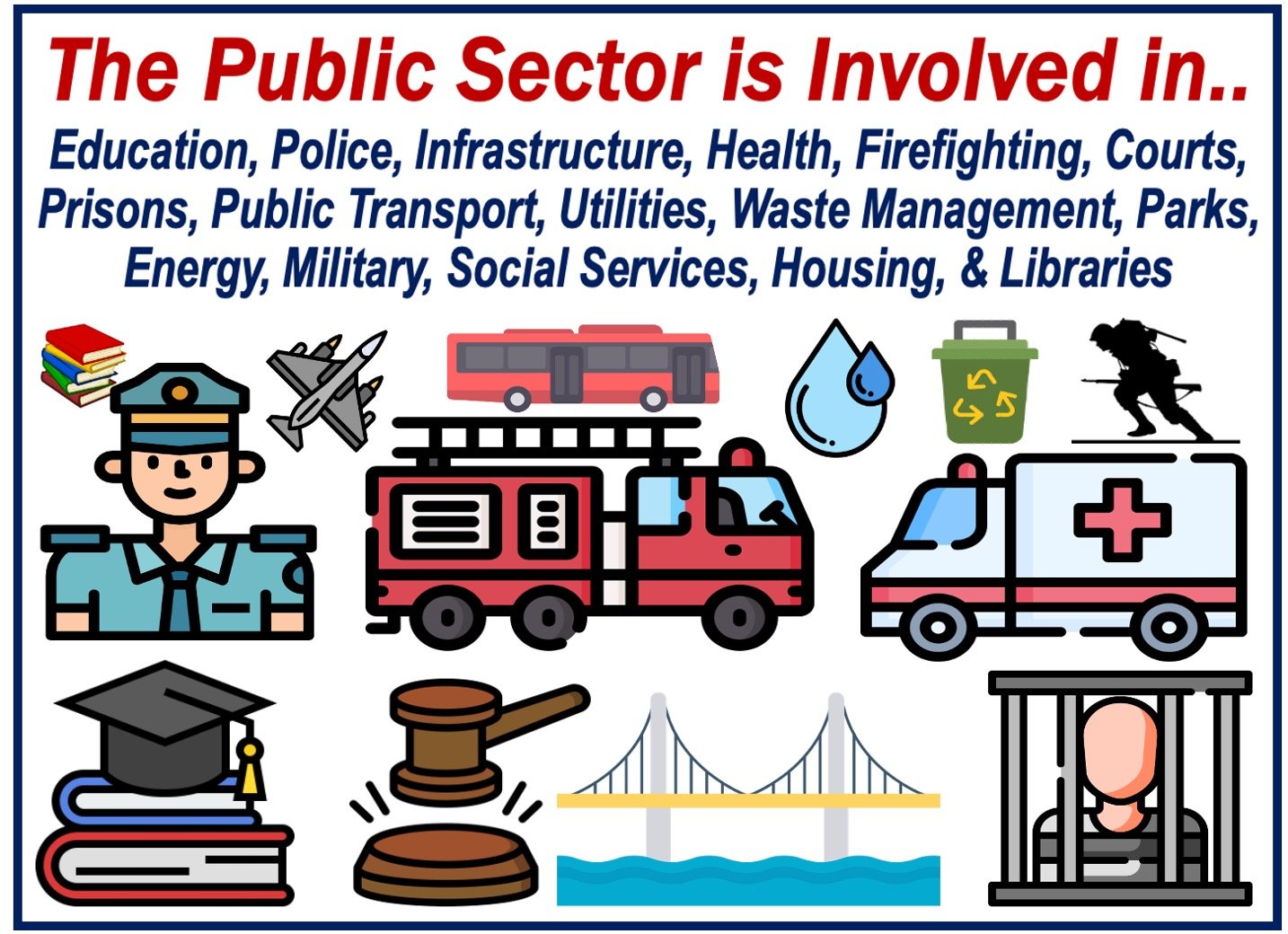The Public Sector is the part of the economy that involves government-controlled or funded organizations and activities. It is the opposite of the private sector, which comprises business and activities not owned or operated by the state. In this article, the word “state” may mean country, national government, or one of the 50 states in America.
Key components
The following are the key components of the public sector:
-
Governmental organizations and agencies
Including federal, state, and local government bodies that are responsible for implementing and creating laws.
-
Public service
These services encompass essential government-provided functions such as education, transportation, public safety, and healthcare.
-
Public enterprises
Government-owned corporations or businesses are typically involved in creating and managing infrastructure and several essential services. In many countries, some, most, or all of the utility companies are in the public sector.
The meaning of public company
The term “public company” may be ambiguous.
A public company is one whose shares can be bought and sold, i.e., traded, by individuals, other companies, and organizations on the stock market.
However, many people, when they hear the term “public company” think of state enterprises (businesses/organizations that belong to the state).
If somebody who is not involved in business, corporate law, or stock markets talks to you about a public company, it might be a good idea to check what they mean.

The roles and functions
The public sector fulfills several roles and functions, including:
-
Policy implementation
Establishing and enforcing laws and regulations that govern the nation and its citizens.
-
Public welfare and services
Providing services that are crucial for the welfare of every individual, such as education, healthcare, and public safety.
-
Economic regulation and stabilization
Monetary and fiscal policies for controlling and regulating the economy (Fiscal policy is determined and implemented by the government, and involves public spending and taxation. Monetary policy, which involves controlling interest rates and the money supply, is determined and implemented by the central bank).
-
Infrastructure
Building and maintaining public infrastructure like roads, bridges, tunnels, and water supply systems.
-
Funding and management
The public sector is mainly funded through taxation and government revenues. In some cases, it profits from public enterprises. The main focus of management is on public welfare and efficient service delivery, instead of trying to generate profit.
Challenges faced
There are several challenges that the public sector faces, such as:
-
Budget constraints
Limited resources and funding can impact the quality and availability of public services.
-
Bureaucracy and efficiency
Sometimes, bureaucratic issues lead to inefficiencies in how the public sector operates.
-
Political influence
Political influence may affect public sector decision-making, impacting the quality of services provided.
Video – What is the Public Sector?
This video presentation, from our sister channel on YouTube – Marketing Business Network, explains what the meaning of ‘The Public Sector’ is using simple and easy-to-understand language and examples.
Written by Nicolas Perez Diaz
